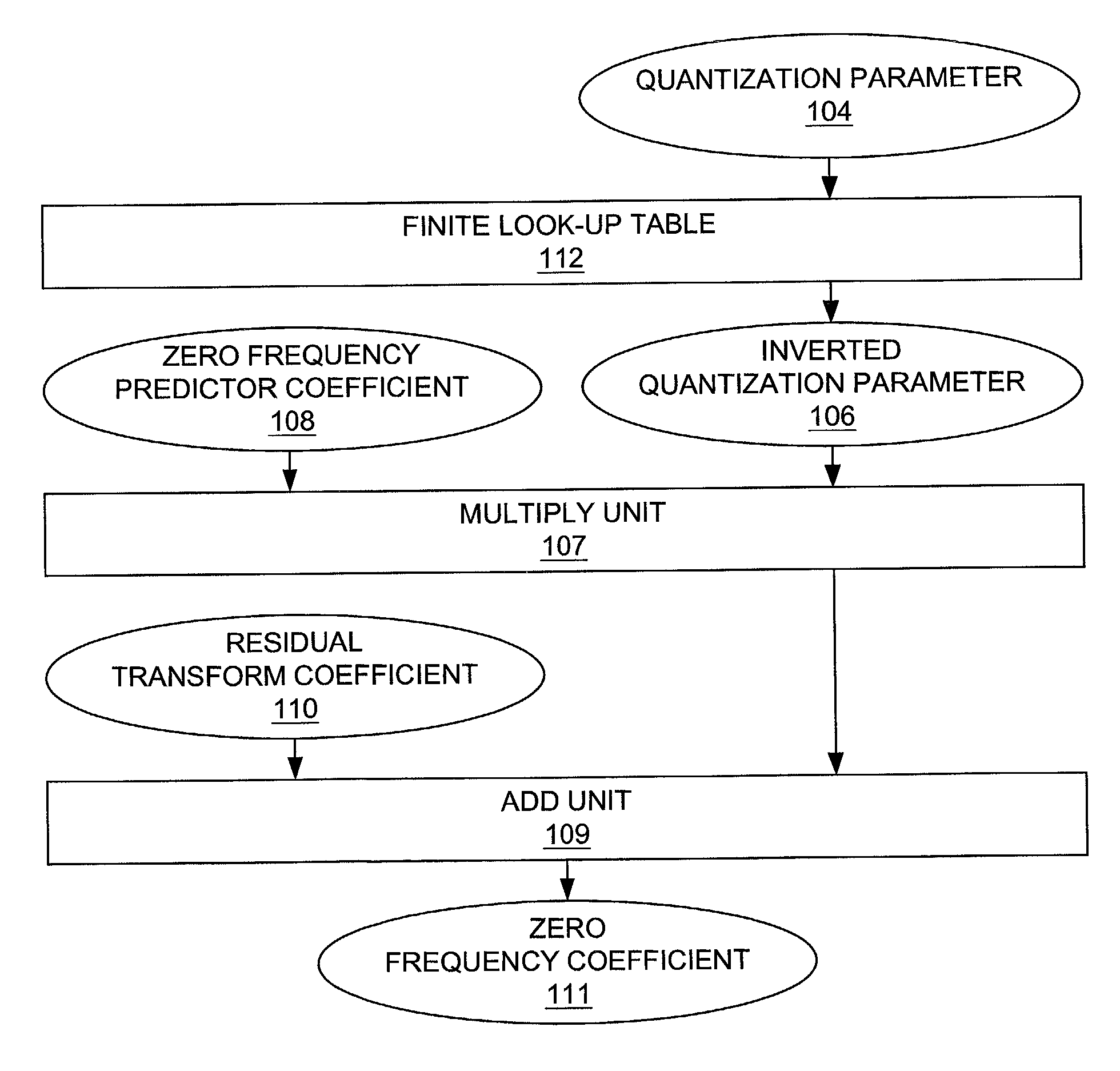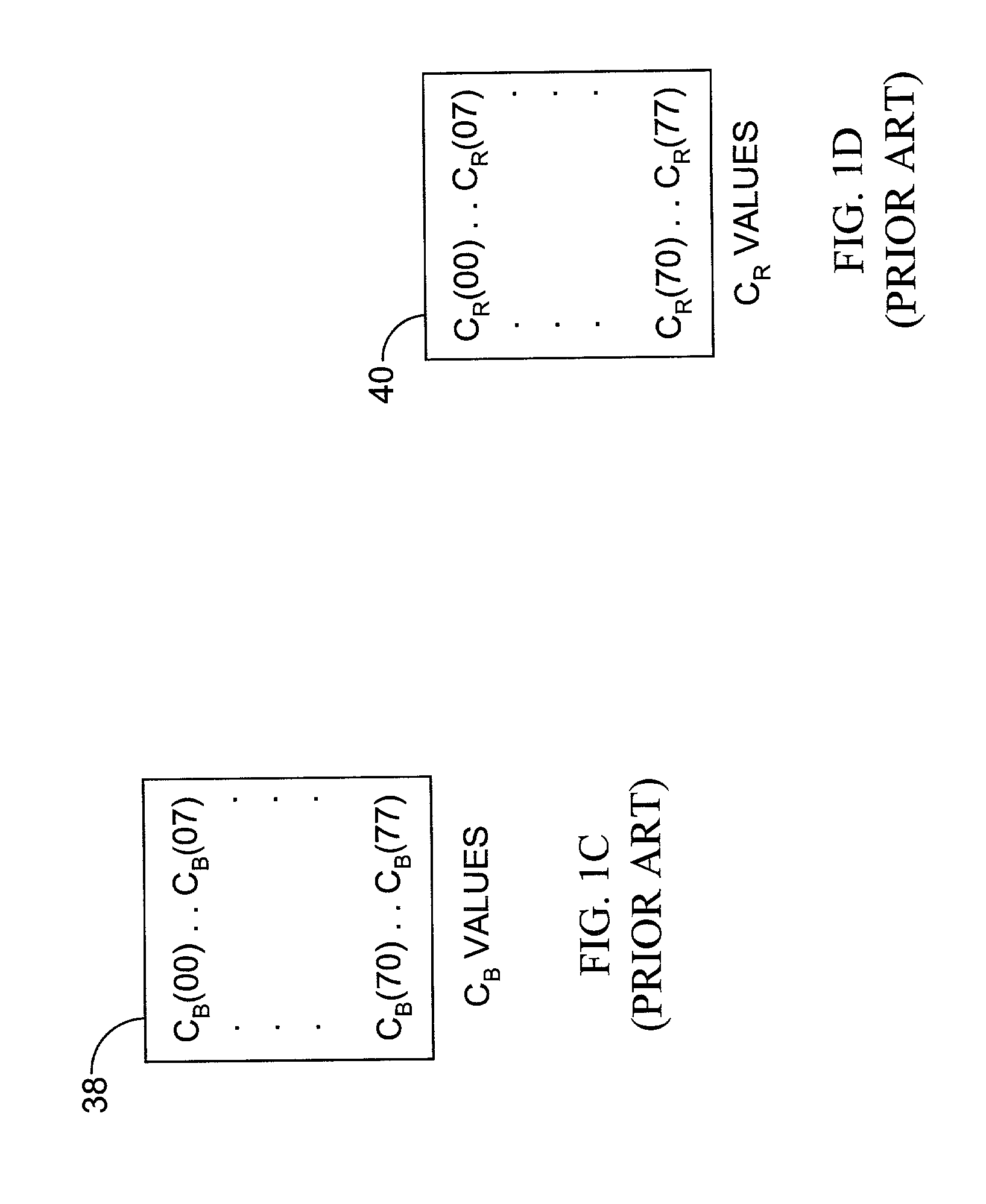Decoding of predicted AC coefficient without division
a technology of ac coefficient and decoding method, applied in the field of image compression techniques, can solve the problems of additional artifacts in the decoding, information loss, and saving processing power and processing time, and achieve the effect of avoiding division
- Summary
- Abstract
- Description
- Claims
- Application Information
AI Technical Summary
Benefits of technology
Problems solved by technology
Method used
Image
Examples
Embodiment Construction
[0064]The following discussion is presented to enable one skilled in the art to make and use the invention. Various modifications to the disclosed embodiments will be readily apparent to those skilled in the art, and the generic principles herein may be applied to other embodiments and applications without departing from the spirit and scope of the present invention as defined by the appended claims. Thus, the present invention is not intended to be limited to the embodiments shown, but is to be accorded the widest scope consistent with the principles and features disclosed herein.
DC Prediction Without Division
[0065]As discussed above in conjunction with FIG. 8, DC prediction is carried out according to the following equation, which is similar to equation (1) but written with general variables and with the DC-scalar instead of the pointer QP:
DCX={overscore (DCX)}+DCY / / DC_scalary (5)
[0066]FIG. 10 is a chart that illustrates the conventional technique for solving equation (1) and / or ...
PUM
 Login to View More
Login to View More Abstract
Description
Claims
Application Information
 Login to View More
Login to View More - R&D
- Intellectual Property
- Life Sciences
- Materials
- Tech Scout
- Unparalleled Data Quality
- Higher Quality Content
- 60% Fewer Hallucinations
Browse by: Latest US Patents, China's latest patents, Technical Efficacy Thesaurus, Application Domain, Technology Topic, Popular Technical Reports.
© 2025 PatSnap. All rights reserved.Legal|Privacy policy|Modern Slavery Act Transparency Statement|Sitemap|About US| Contact US: help@patsnap.com



